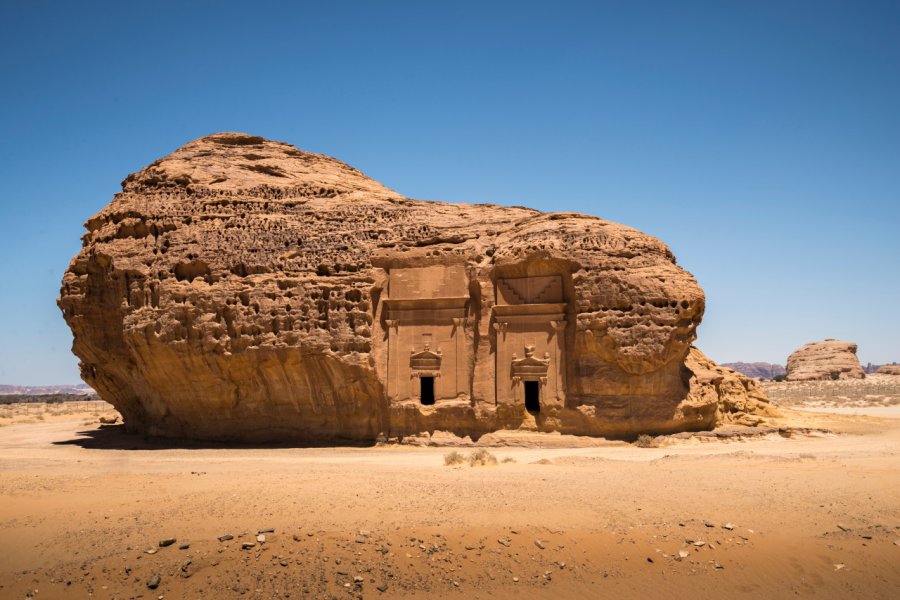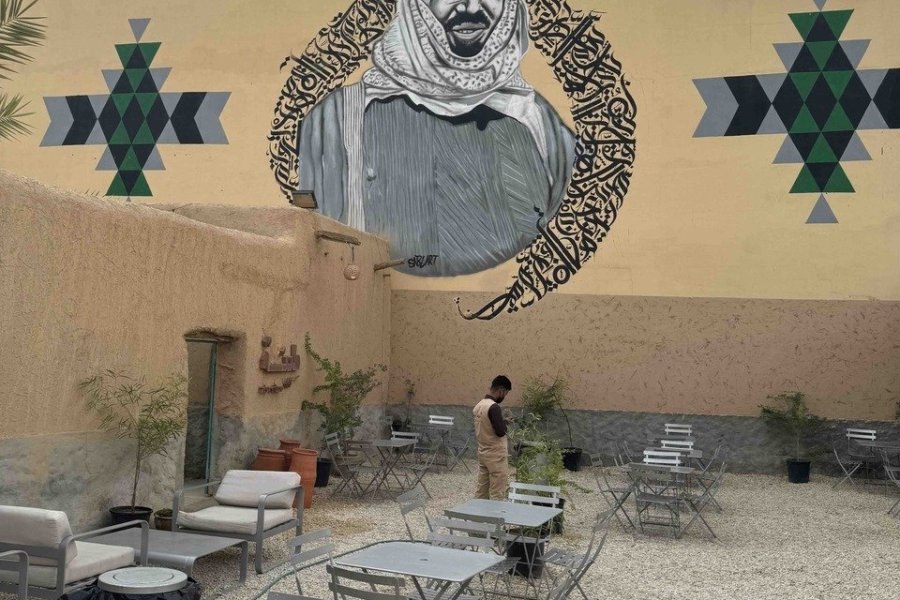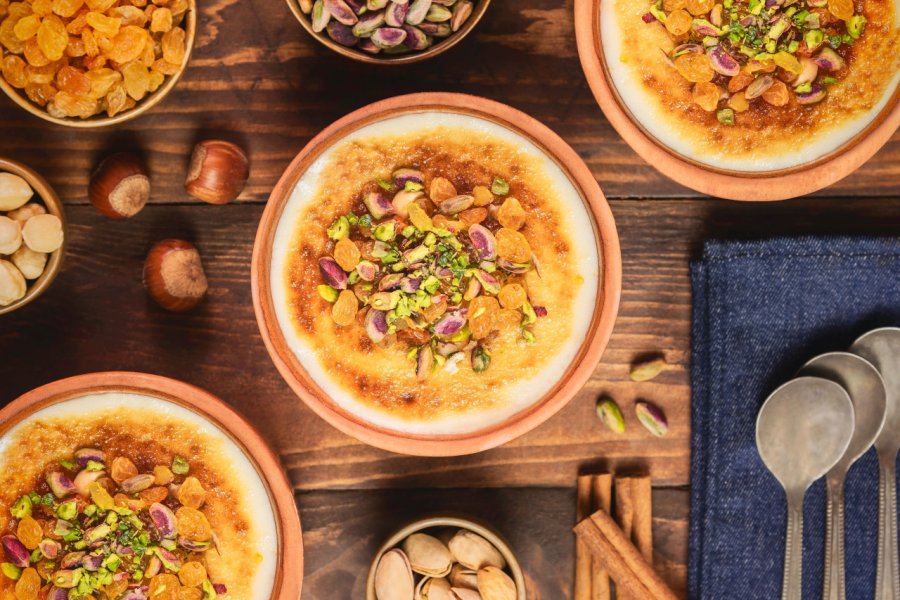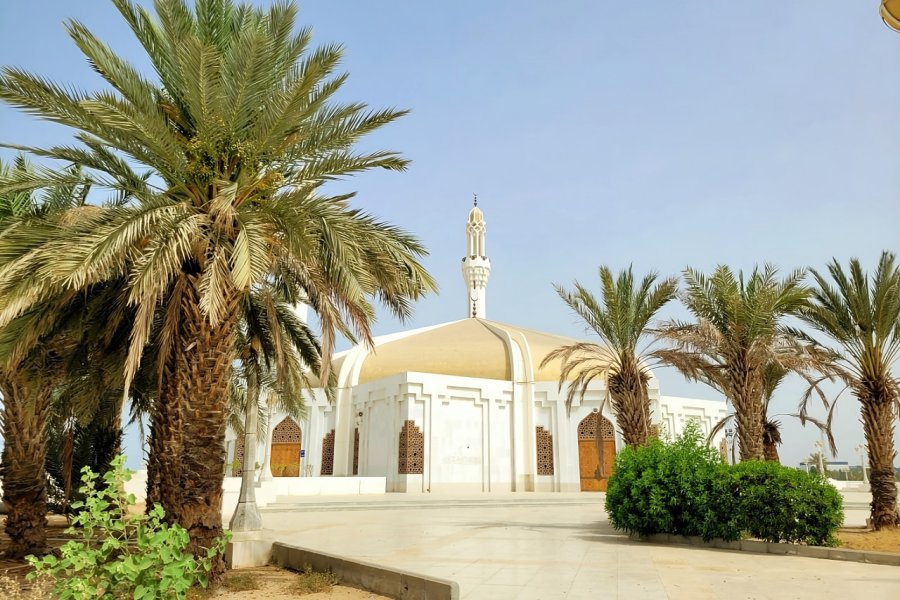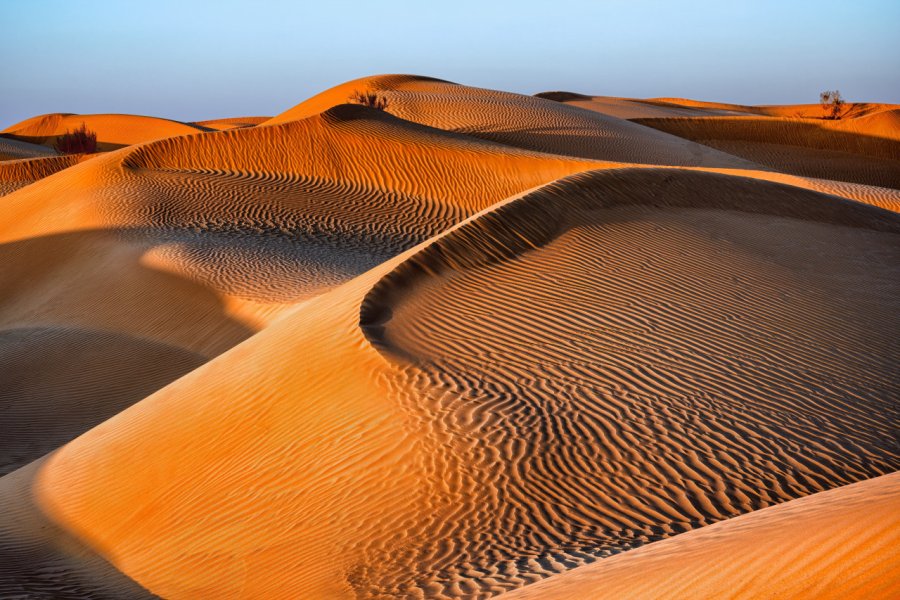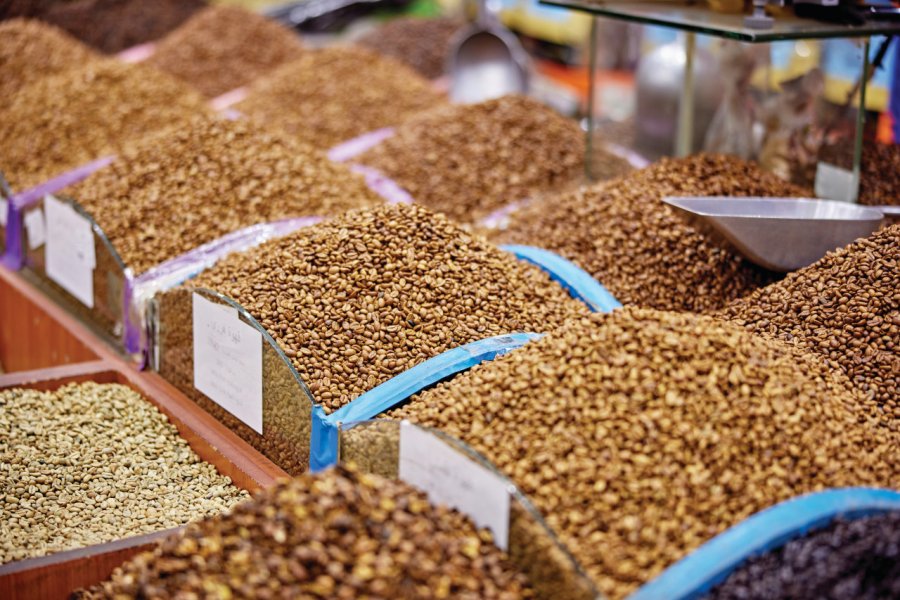Travel guide Saudi Arabia
Set sail forSaudi Arabia, this mythical land where history and modernity beckon. This tourism Eldorado has been open to you since 2019, thanks to a new visa regime and a direct flight between Paris and AlUla in winter. A previously unimaginable possibility. Your first port of call could be the kingdom's impressive capital Riyadh, where you can admire futuristic skyscrapers while strolling through traditional souks. Take a break in the best hotels and sample local cuisine in unusual restaurants. Then, the inviting call of the Red Sea will lead you to Jeddah, with its splendid corniche and narrow streets, silent witnesses to an opulent history. But your trip to Saudi Arabia wouldn't be complete without a stopover in Al Khobar, where exceptional archaeological sites bear witness to ancient civilizations. AlUla and Madain Saleh, a UNESCO World Heritage site, will tell you stories of thousands of years, engraved in stone. Imagine yourself in the city of Taif, in the heart of vast rose plantations. At harvest time, an ocean of fragrant petals bursts into a symphony of colors. It's a breathtaking sight. And for those on a spiritual quest, Saudi Arabia offers a unique opportunity to perform Umrah during Ramadan. Mecca awaits you, with the magnificent Kaaba at the heart of the city, a place of devotion and peace for millions of believers. Our Saudi Arabia tour guide will accompany you on this adventure, with expert advice on the most beautiful places to see. Get ready for a journey that will touch your soul and awaken all your senses.
What to see, what to do Saudi Arabia?
-
Book an activity
-
Customized travel
- The most beautiful cities Saudi Arabia
When to go Saudi Arabia ?
When should you visit Saudi Arabia, the enchanting kingdom that dances harmoniously between Bedouin footsteps and bustling modernity? This country of a thousand facets, cradle of Islam and haven of impressive cultural wealth, is a destination to discover all year round. However, each season has its own particularities and charms:
From November to February, the mild Saudi winter welcomes you with temperatures hovering around 20-25°C. This climatic window is perfect for discovering the treasures of Saudi Arabia. Riyadh, the capital, offers lively markets, grandiose palaces and futuristic skyscrapers. Further afield, explore the lunar landscapes of Al Khobar, a modern city on the shores of the Persian Gulf, a true mirror of Saudi modernity.
From March to May, spring in Saudi Arabia is marked by a gradual rise in temperatures. This is an ideal time to visit Taif, the "city of roses", where the plantations are bursting with color and fragrance. Taif is also renowned for its mild climate, even in summer, thanks to its high altitude.
The summer months, from June to September, feature temperatures in excess of 45 degrees. This is the season of blazing sun, hot sand and azure skies. It's also the time of the Hajj, the great pilgrimage to Mecca, which takes place every year according to the Islamic lunar calendar. If you can tolerate the heat, it's an unforgettable and spiritual experience.
In October and November, autumn brings the return of mild weather. This is an excellent time to visit the archaeological sites of Al Ula and Madain Saleh, which marvel at their ancient architecture and desert landscape.
Whatever the season, a trip to Saudi Arabia is an immersion in a world where ancient history rubs shoulders with innovation, where the sacred mingles with everyday life. Prepare to be surprised and amazed at every step you take in this desert kingdom.
Suggested addresses Saudi Arabia
Travel Saudi Arabia
-
Find a hotel
-
Car Rental
-
International e-SIM package
-
Find a local agency
As big as 4 times the size of France, Saudi Arabia offers a diversity of landscapes, activities, and sites of interest that will make you revise all the commonplaces you might have about this country. Certainly, the dunes of blond or red sand exist. But the country is also crossed by a long chain of mountains, which runs from north to south, whose highest peaks rise to 3,000 meters. If you have the time and the budget, you should allow a month to discover the country in its entirety. In 15 days, you will have an overview of the essentials, which are concentrated in the north and west of the country. But you can also consider taking a quick trip to the Middle East or taking advantage of the direct flight between Paris and AlUla in winter. You can then discover the tourist jewel of Saudi Arabia, between archaeological treasures, spectacular mountains and green oasis.
Find unique Stay Offers with our Partners
How to go Saudi Arabia
How to go alone
Going to Saudi Arabia alone means plunging into a world of contrasts. Obtain an electronic visa online. Then prepare yourself in advance: study the local code of conduct, learn a few words in Arabic, plan your itinerary carefully. Think about key cities like Riyadh, Jeddah or a visit to Mecca. Book your accommodation and take out travel insurance to cover eventualities. A solo trip to Saudi Arabia is a memorable adventure!
How to go on a tour
For an organized trip to Saudi Arabia, opt for a licensed travel agency. They offer tours covering the main attractions, such as Riyadh, Jeddah or Mecca. Make sure the package includes air tickets, accommodation, meals and excursions.
Some also offer visa assistance. A local guide can enrich your experience and help you understand Saudi culture.
How to get around
To get around Saudi Arabia, there are a number of transport options available. Cabs are common, so negotiate the fare before the journey. Carpooling is also popular with apps like Uber. For more freedom, consider renting a car, as the roads are well maintained. Note that women have been allowed to drive since 2018. Domestic flights are convenient for long distances. And, for an authentic experience, try the local buses!
Featured articles Saudi Arabia
Discover Saudi Arabia
A land closed to foreign tourists until 2019, Saudi Arabia is showing a face far removed from the clichés that cling to it. The accession to power of the young Crown Prince Mohammed Ben Salman in 2017 seems to mark a clear break in the country's history. His "Vision 2030" plan to modernize the kingdom aims to initiate the post-oil shift, reduce unemployment and social inequalities, diversify the economy and set a course for Saudi youth. The country of 36.4 million inhabitants, whose average age is 32, developed rapidly from the 1950s onwards, bringing roads, towns and dams to life between sand dunes and desert mountains. The ancestral semi-nomadic way of life was abandoned in favor of glittering comforts, for which the Saudis went into massive debt. Between the winds of modernity and deep-rooted traditions, the country finds itself at a crossroads.
Pictures and images Saudi Arabia
The 12 keywords Saudi Arabia
1. Abaya
Although it is no longer compulsory for women to wear the long black coat, it will take years for what has become a custom to end. Since the 1970s, Saudi women have been wearing the abaya, which hides their bodies, as well as the hijab (headscarf) and the niqab (face veil), which are also no longer mandatory.
2. Balad

The term means "old city" in Arabic. Long focused on development and in search of modernity, Saudi Arabia has ignored its old quarters. The country is just beginning to take an interest in them, and is enthusiastically renovating some of its old cities, such as Jeddah, a UNESCO World Heritage Site, and AlUla.
3. Bedouin
Nomads, the Bedouin have long lived in the desert. They were forcibly settled in the 1970s. The Bedouin now live in permanent houses. But they have kept a strong link with the desert. They still pitch tents to provide shelter while they herd their goats and sheep.
4. Dromedary
A true national emblem, the dromedary occupies an essential place in the hearts of Saudis. There are more than 100 words in the Arabic vocabulary to designate it. Hejin is the generic term, thenaya the term for the 5-year-old dromedary slaughtered for Eid, harib the camel that leads the herd, ghab the one that drinks every 2 days.
5. Ghutra

In Saudi Arabia, the keffiyeh is also known as a ghutra. This large square of red-and-white cotton is the preserve of men. It is folded in half, in a triangle, and placed on top of the head. It is held in place by an igal, a black cord, formerly made of camel or goat wool. The corners are folded over the top of the head.
6. Hookah
The water pipe, also known as shisha or hookah, is one of the Saudi's pleasures. Both men and women indulge in this pleasure, preferably in the evening, but rarely together, except among the young. They meet in specialized bars that offer a wide range of flavored tobacco: mint, watermelon, pineapple ...
7. Kabsa

The Saudi national dish is made of rice, meat, spices, chili, dried fruits. The foods are pressed(kabasa in Arabic) together in the cooking dish. There are many variations of this dish. Depending on the region the spices or rice used will be different. In Hofuf, ahsawi rice is used, while the more affluent use saffron.
8. Kebab
Among Arabs, the kebab is a skewer of minced meat flavored with herbs and spices. There are many different kinds of kebabs, made of beef, lamb, chicken... Shawarma is meat roasted on long swords, Turkish style, and shredded. In a sandwich, it will be served with French fries, some vegetables and a garlic sauce.
9. Mahaba
Meaning both hello and welcome, mahaba is a casual way of greeting one another. Less formal and less religious than salam aleikum, which literally means peace be upon you, the term is used when arriving somewhere. Another way of saying welcome is the formula derived from the ancient Arabic ahlan wa sahlan.
10. Oil
If you take a tour of Saudi Arabia, you will not see the oil wells north of Dammam, close to the border with Kuwait. However, you will see very clearly the consequences of this financial windfall in the excellent infrastructure in place and the massive investments.
11. Qahwa

National drink, the qahwa collects all the suffrages. Arabian coffee is made from unroasted beans. Its juice is yellow and its taste bitter. Saudis sip it all day long, in small quantities, and accompany it with a date or a sweet to fight the bitterness. Originally, the beans came from Yemen.
12. Thobe
The thobe or thawb is a white cotton dress worn ankle-length by Saudis. Despite their identical appearance, thobes vary in detail, especially the embroidery on the chest. Traditionally, embroiderers specialized in one motif. They would pass the thobe from hand to hand to assemble the final design.
You are from here, if...
You shower your interlocutor with polite phrases and ask about his family as well as his news.
You pour yourself a small qahwa before leaving your hotel. You'll find the traditional coffee maker in the lobby of almost every establishment.
You eat exclusively with your right hand, right on the plate, forming a dumpling with the rice and mixed meat. The left hand is reserved for impure activities, such as personal hygiene.
You never cross your left leg over your right, and you never turn the soles of your feet towards someone when seated.
You never shake hands with a man when you're a woman, unless he offers it to you.
You use the family entrance in restaurants when you are in the company of a woman, children, or if you are a single woman.
Take off your shoes when entering a room or sitting on a carpet.

